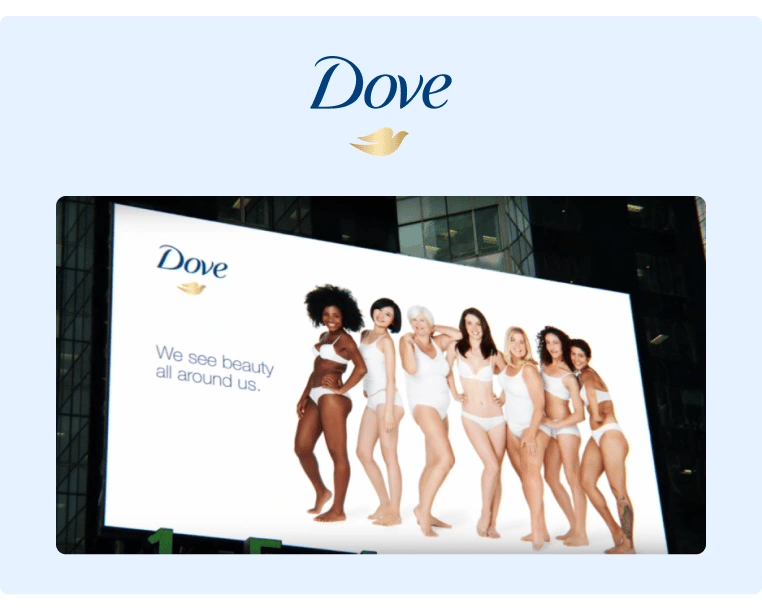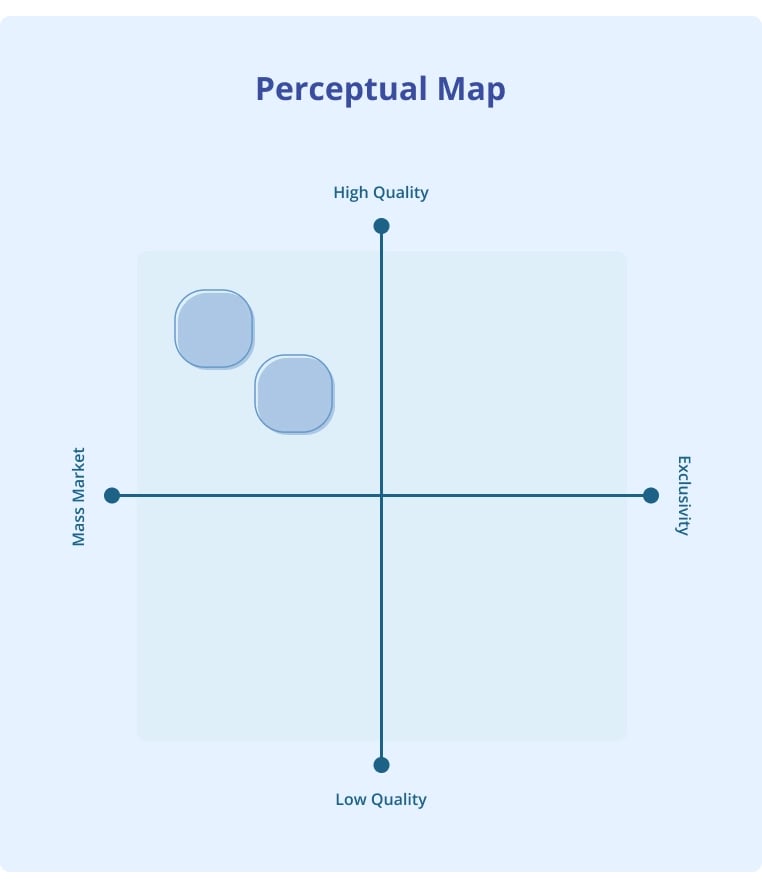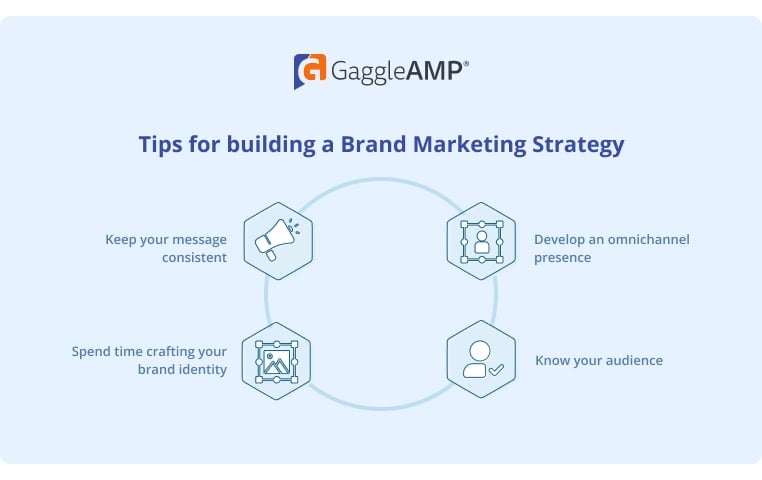Why and How to Develop a Brand Marketing Strategy
It’s 2023, and the world marketplace continues to grow. The global retail market size is currently valued at $26 trillion, and that figure is expected to reach $30 trillion by 2024. Hundreds of e-retail brands are launched every day in hopes of securing a piece of this huge pie. However, that isn’t an easy feat.
Experts believe that the e-commerce market is saturated and far beyond the point of healthy competition. This means that there are way more brands than there are consumers, which puts the onus on companies to differentiate themselves from the competition to attract consumers.
But how exactly can you do that? The answer: efficient and innovative brand marketing. The right brand marketing strategies can help you attract and retain loyal customers. However, crafting the perfect brand marketing strategy calls for an understanding of how such strategies work and how they can be leveraged to influence consumer decisions.
In this article, we will teach you how to develop a new brand marketing strategy and discuss some of the best practices you can implement in your next campaign.
The Importance of Having a Brand Marketing Strategy
With so many brand choices available online, it’s essential for brands to distinguish themselves from the competition. A brand marketing strategy can help a brand stand out and also help target specific groups. This is particularly helpful since Gen Z, the next generation of internet consumers, is a particularly challenging group to cater to.
According to Forbes, Gen Z consumers consider brand values before making a purchase decision. They’re looking beyond the surface value of your products and into the core values and operational philosophies of your brand. For example, if your products are excellent quality but not eco-friendly, that is more than likely to discourage some environmentally conscious Gen Z consumers from buying your products.

An ad from Patagonia targeted at Gen Z, who sees thrifting as a lifestyle.
Further, brand loyalty is considerably rare amongst Gen Z consumers. Research shows that only 37% of Gen Z bought from the brand that they were considering at the start of their purchase journey. These consumers frequently change their shopping choices depending on the value they’re being provided with and whether that aligns with their personal values. A major reason for this behavior could be that Gen Z consumers are what Forbes calls “digital natives.” They have grown up using the internet and all of its infinite resources, which makes them more likely to search, compare, think, and evaluate every option before making a purchase.
Catering to this highly critical, tech-savvy consumer demographic (which will soon become the world’s largest consumer population) requires brands to stay on top of their game. Marketing campaigns can no longer just focus on the products and services being offered. Instead, brands need to shift to more holistic branding practices that allow them to effectively communicate their brand ideas and values.
Building a Brand Recognition Marketing Strategy
When it comes to building an effective branding marketing strategy, it all starts with the right idea. One of the most common traps that companies fall prey to is not developing a holistic brand identity before running marketing campaigns. This leaves them vulnerable to public scrutiny and affects how consumers perceive their brand. For instance, if a retail brand sells eco-friendly products but happens to be using packaging materials harmful to the environment, consumers are likely to catch on to this contradiction sooner or later.

Once the damage is done, the company might never be able to regain its eco-friendly image again, suffering a tarnished reputation and subsequent loss of potential revenue. This makes it crucial for companies to have a 360-degree vision while crafting their brand awareness marketing strategies. Here are three ways to do it effectively.
1. Develop a Core Brand Value
Brand values are a combination of what you wish to provide your customers and how you want your brand to be perceived by them. At the core of your company should be a product or service offering that you believe can attract customers. It can be something as simple as graphic t-shirts or a pool cleaning service.
The core idea here is to invest in something that you believe is a good product. But be prepared, getting people to love something won’t necessarily be easy. As Airbnb CEO and founder Brian Chesky puts it, “It's really hard to get even 10 people to love anything…”
Once you have the perfect product or service offering, you can start developing a brand marketing strategy plan around it. A few questions you need to ask yourself here are:
- What are my brand’s core values?
- How do I want consumers to perceive my brand?
- What niche do I see this brand occupying in the market?
Answering these questions will help guide you toward your perfect brand identity.

2. Conduct Market Research
Once you’re sure of what you want to offer to consumers, it’s time to weigh it against what consumers are looking for. Market research will help you identify gaps in the market that you can utilize to establish yourself as a key player. For example, if your competitive research shows a lack of affordable healthcare equipment in the current market, you can stress more affordability and accessibility while developing a brand identity for your medical equipment company.
Market research also helps you identify the right consumer demographics to target your marketing towards. While it is important to know who you are as a brand while developing a brand building marketing strategy, it is equally important to know your consumer base. Once your research tells you what demographic is most likely to buy your products, you can tailor your brand marketing to target it.
For instance, urban fashion brands like H&M attract a predominantly young consumer base, which is why the company’s brand strategy is centered around approaching fashion through a young, fresh lens.
3. Align Your Branding With Your Core Values
Your branding should mirror your brand’s core values. H&M’s branding is centered on a youthful customer base that favors trendy fast fashion with an urban flair. So, naturally their campaigns, ads, and logos reflect this feeling.
H&M’s logo uses a vibrant red and white combination to communicate its core values of youth and freshness. Taking it a step further, it uses a sleek, cosmopolitan font to drive the point home. Most of H&M’s branding, including its ad campaigns, places this urban color scheme over equally young and ‘urban’ ideas.
H&M’s campaigns almost always feature young, 20-something models. This makes sense considering the brand is primarily marketed towards this age group. Although in recent years the brand has expanded to include baby, kids, and even home products, too.
Like H&M, to become a successful brand, your business needs to fully embody its core values across all its branding activities, from simple business cards and product packaging to elaborate ad campaigns.
The Role of Brand Positioning in a Brand Marketing Strategy
While every business wants to shoot for the stars with its brand marketing, it is important to set realistic goals and avoid working haphazardly. Here’s where brand positioning comes into play.
Brand positioning is knowing exactly what space you want your brand to occupy in the market. Overestimating your brand’s potential can put you in direct competition against industry giants who can easily draw away your consumer base with their strong market position. This makes it vital for you to develop a sensible brand positioning marketing strategy and tailor your brand marketing strategies accordingly.
The concept of brand positioning marketing strategy is centered around a simple idea – a brand can distinguish itself based on innovation. Innovation comes from listening to your consumers and providing features and facilities that your competitors don’t currently provide. This strategy works on the assumption that you can always position your brand to fill an existing gap in the market where consumer demand isn't being met.
Here are three tips to take your brand positioning to the next level.
1. Leverage a Unique Selling Point (USP)
Like H&M, beauty and self-care brand Dove leverages a Unique Selling Point (USP) to establish a unique position for their brand in an existing market. Dove does not sell any particularly unique products that aren’t available elsewhere on the market. However, it markets itself in a way that focuses on women's natural and authentic beauty rather than merely their outward appearance. This helps the company distinguish itself as a unique consumer brand that is leading the revolution towards better, more inclusive beauty standards in several consumer markets.

Example from Dove’s brand campaign #RaisetheBeautyBar.
2. Be Consistent and Credible
To position your brand effectively within a market, your branding needs to be consistent and credible.
Consistency entails keeping all of your branding efforts in line with your brand positioning goals. For instance, if you want your brand to become a cost-effective alternative to other options, your brand marketing strategy should focus on making your brand appear affordable and accessible. You can then add your values like sustainability and inclusivity to the mix and come up with a holistic brand identity that includes all of these aspects.
Credibility involves supporting your positioning claims with actual operational efforts. In Dove’s case, the company wouldn’t be able to establish a unique position for itself in the market if it didn’t run inclusive ad campaigns that are in line with its positioning strategy. Dove’s inclusion of working women from all walks of life in its ads helps it give its inclusivity claims the credibility needed to attract consumers.
3. Focus on Niche Areas
To zone in on which niche areas you should be focusing on, charts like this can help your marketing teams develop a concrete brand positioning marketing strategy.

In this chart, the general product market is divided into four quadrants based on product quality and consumer appeal. Assigning a numerical scale to each parameter can help your marketing teams divide a vast and confusing product market into a few key product niches.
Once this is done, you can brainstorm what niche you see your brand occupying.
How Does Brand Positioning Help a Business?
Appropriate brand positioning measures can help a business in several ways. One of the key benefits is that brand positioning can justify pricing strategies, whether that’s high pricing or affordable pricing.
For example, brand positioning can allow businesses to highlight the high quality and exclusivity of their products or services to consumers, which can help a business charge a higher rate. On the other hand, brand positioning can also help businesses market affordable products as being more accessible and consumer-friendly than others.
Some brands even tie their pricing strategies in with their brand positioning. For example, some small businesses may want to get rid of the perception that their products must cost less and must be of lower-than-expected quality. So, they focus on the quality and uniqueness of their products to justify their higher prices.
Further, strong brand positioning strategies allow your business to get more creative with its marketing efforts. Once your marketing teams have a set goal (the envisioned brand position) to work towards, they can develop newer, more holistic brand marketing strategies that can help turn your business into an extensive brand experience.
Tips for Building a Brand Marketing Strategy
Finally, here are a few tips that can help you build a premium brand marketing strategy.
Keep Your Messaging Consistent
It is important for your business not to contradict itself through haphazard brand messaging. You should ensure that your brand messaging (e.g., the tone and core ideas behind the content you put out) remains consistent on each one of your marketing channels, from Twitter to your e-commerce website.
Develop an Omnichannel Presence
Having an omnichannel brand presence helps you move beyond being a business to becoming an integral part of your consumers’ everyday lives. Some of the world’s biggest brands, like Amazon and Apple, use omnichannel marketing to cover all target consumer bases on the internet. It also helps them develop the perception that their products are essential to the experience of being online.
Spend Time Crafting Your Brand Identity
Your brand identity is crucial to the experience a consumer has with your business. Developing a strong brand identity will allow you to portray your business as a holistic, consumer-centered, and value-driven brand that consumers can rely on. You need to be fully aware of your brand’s core philosophies, goals, and values to craft a strong brand identity.
Know Your Audience
Knowing your target consumer demographics well is arguably the most important prerequisite for developing a strong brand marketing strategy. Understanding your consumers’ personal beliefs, wants, and behavioral patterns will allow you to cater to them better and develop a brand identity that is crafted to attract and retain customers.
Build a Holistic Brand
Research shows that modern consumer purchase decisions are not based solely on the pricing and utility of products. Instead, consumers are looking for holistic brand experiences that allow them to take part in an immersive consumer journey where all of their needs are addressed through means that they approve of. This entails building 360° brand experiences where consumers are made aware of everything from the brand’s values to the brand’s journey, aspirations, and what it stands for.
Maintaining a consistent voice across all communication platforms is important in the age of multi-channel brand marketing. The ability to portray a holistic image differentiates brands in consumers' minds and develops long-term brand loyalty.
Final Thoughts
Another great way to strengthen your company’s brand marketing efforts is to set up effective employee advocacy campaigns. GaggleAMP’s employee advocacy platform allows employees to openly communicate with each other and share their thoughts (and important company resources) on social media sites, all at the click of a button. GaggleAMP helps businesses build a culture of teamwork and trust that they can leverage to increase employee engagement across several areas and turn loyal employees into mini-influencers!
Ready to give your brand marketing campaign the edge it needs with GaggleAMP? Start a free trial today.












